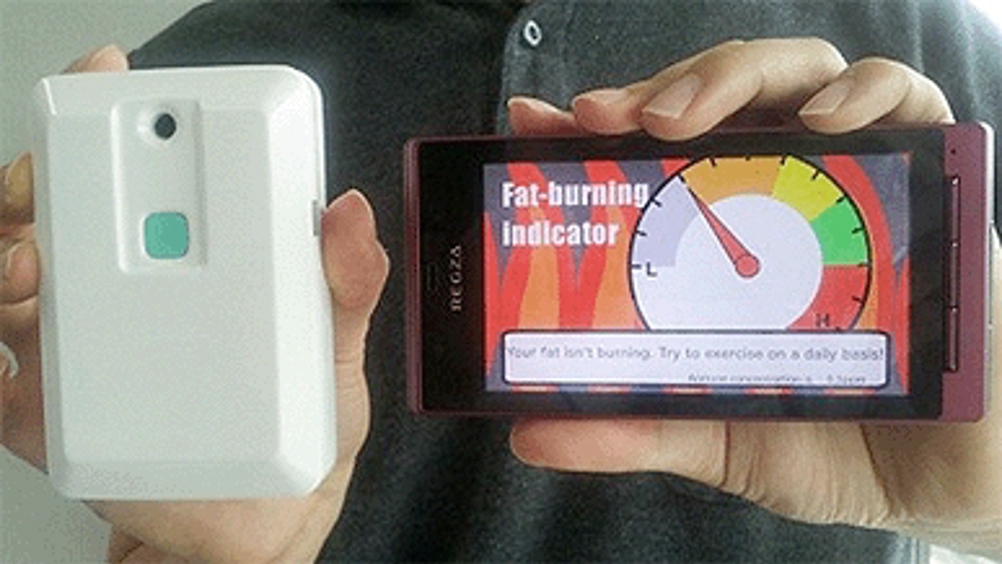Sensor could aid weight loss through acetone assessments
A sensor developed in Japan promises to let weight watchers know if they are achieving their goals by measuring a chemical in their breath.

Developed at NTT DOCOMO Research Laboratories, the portable, pocket-sized sensor works by measuring increased levels of acetone on the breath, which is said to be a good indicator of when the body has begun to break down fat.
The device has been presented today, 25 July, in IOP Publishing’s Journal of Breath Research.
Acetone is primarily produced in the blood when fat is broken down; however, it is also expelled through alveoli in the lungs during exhalation and is present in exhaled breath.
This new device, which is reportedly capable of detecting acetone concentrations in the range of 0.2 to 50 parts-per-million, is 10 cm long, weighs 125g and requires two AA batteries to operate.
The device consists of a pressure sensor to detect the exhaled breath and two types of semiconductor-based gas sensors to detect acetone.
After a user blows into the device, the acetone concentration levels can be calculated and sent to a smartphone, either by Bluetooth or a cable, within 10 seconds.
Register now to continue reading
Thanks for visiting The Engineer. You’ve now reached your monthly limit of news stories. Register for free to unlock unlimited access to all of our news coverage, as well as premium content including opinion, in-depth features and special reports.
Benefits of registering
-
In-depth insights and coverage of key emerging trends
-
Unrestricted access to special reports throughout the year
-
Daily technology news delivered straight to your inbox










UK Enters ‘Golden Age of Nuclear’
The delay (nearly 8 years) in getting approval for the Rolls-Royce SMR is most worrying. Signifies a torpid and expensive system that is quite onerous...